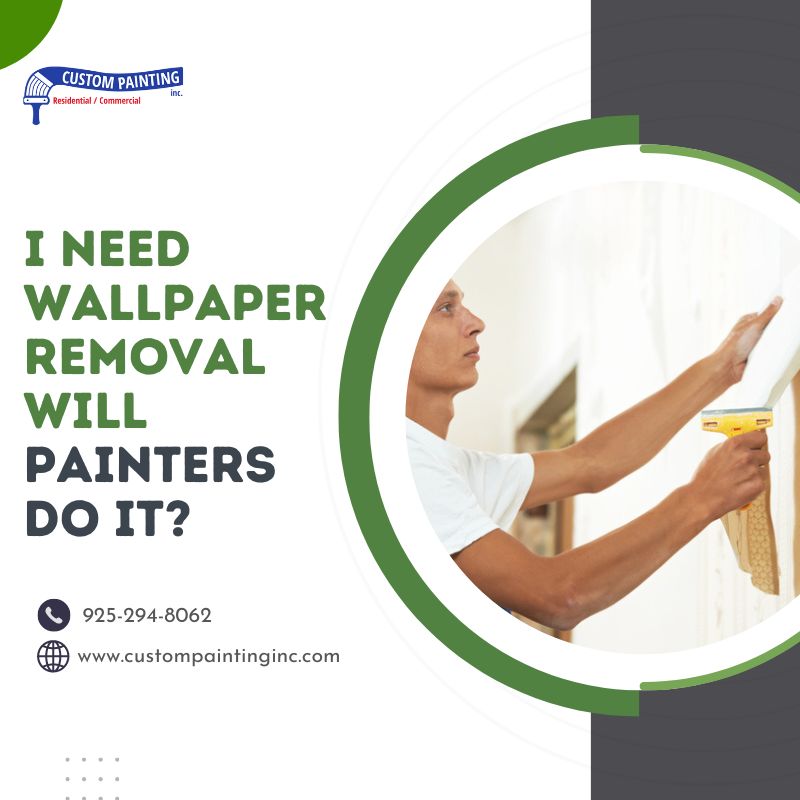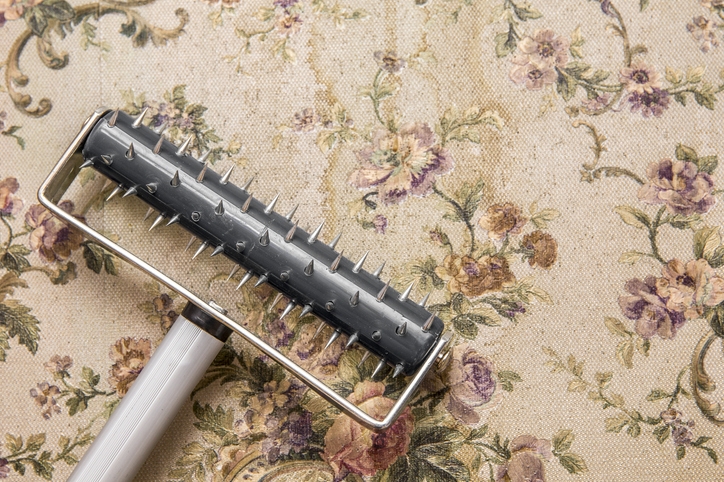Decades ago, the wallpaper haunting your living room, bedroom, bathroom, and kitchen was all the rage. However, you need to get rid of them and want to give your home a fresh, modern look.
However, wallpaper removal is time-consuming and tedious work. If the wallpaper has been stuck for years, removing it can be quite frustrating. But should you have it removed? Or should you paint it over?
Reasons to remove wallpaper
Homeowners often want to remove old wallpaper for several reasons:
- Outdated style: Wallpaper designs, especially older ones, can look dated or no longer fit with modern interior design trends or personal tastes. Removing it allows homeowners to update their space with a fresher look.
- Damaged wallpaper: Over time, wallpaper can peel, tear, or fade due to moisture, sunlight, or general wear and tear. Removing damaged wallpaper helps restore a clean and smooth wall surface.
- Desire for change: Homeowners may simply want to refresh their space, opting for new paint or modern wallpaper styles that better reflect their current preferences.
- Incompatibility with décor: New furniture, artwork, or fixtures might clash with the existing wallpaper. Removing it gives more flexibility in choosing colors and textures that complement the updated décor better.
- Difficult maintenance: Wallpaper can be challenging to clean and maintain, particularly in high-traffic or moisture-prone areas like kitchens and bathrooms. Paint or newer, more durable materials might offer easier upkeep.
- Potential wall damage: Some wallpapers can trap moisture, leading to mold or mildew growth behind the paper. Homeowners may want to remove it to address hidden damage and repair the walls.
- Increasing home value: When preparing to sell, homeowners might remove outdated wallpaper to make the home more appealing to potential buyers who prefer neutral, blank canvases over patterned walls.
Wallpaper removal: better than painting over it
Removing wallpaper is often seen as a way to modernize and simplify a space, making it more functional and aesthetically pleasing.
Many homeowners tiring of the look of their old wallpaper are tempted to paint over it, simply because it’s a much easier route than trying to scrape it.
After all, we’ve heard horror stories about some homeowners trying to remove old wallpaper. There are instances of accidentally damaging the drywall while trying to remove old wallpaper. After having peeled away dozens of layers of paper, some homeowners may find more layers of it underneath, much to their surprise and frustration.
However, home improvement professionals strongly recommend removing wallpaper before painting whenever possible. That way, you’ll expect better results and fewer surface issues in the future.
Here are the following reasons why removing old wallpaper is better than painting over it:
- Smooth surface: Removing wallpaper ensures a smooth, even surface while painting over wallpaper can reveal seams, texture, or bubbles that detract from the final finish.
- Adhesion: Paint may not adhere properly to wallpaper, leading to peeling or flaking over time.
- Moisture issues: Wallpaper can trap moisture, especially in humid areas, which may lead to mold growth beneath the paint.
- Easier future updates: Once the wallpaper is removed, future paint jobs will be easier and more durable.
Methods of wallpaper removal
There are several methods for removing wallpaper, each requiring specific tools and materials. Here’s a breakdown:
1. Peeling and scraping
- Method: This method works best if the wallpaper is peelable or strippable. It involves manually peeling off the top layer of wallpaper.
- Tools & materials:
- Putty knife or wallpaper scraper
- Sponge or rag
- Water to dampen any leftover adhesive
- Steps:
- Use a putty knife to lift and peel the top layer.
- Scrape any stubborn pieces left on the wall.
2. Soapy water method
- Method: Warm, soapy water is applied to loosen the adhesive, making it easier to scrape.
- Tools & materials:
- Sponge or spray bottle
- Warm water mixed with mild dish soap
- Putty knife or wallpaper scraper
- Steps:
- Spray or sponge the solution onto the wallpaper.
- Let it soak for a few minutes to loosen the adhesive.
- Scrape the wallpaper off with a putty knife.
3. Vinegar and water solution
- Method: A mixture of vinegar and water helps break down the adhesive.
- Tools & Materials:
- Spray bottle
- White vinegar and warm water (1:1 ratio)
- Putty knife or scraper
- Sponge
- Steps:
- Spray the vinegar solution onto the wallpaper.
- Let it soak for 10-15 minutes.
- Scrape off the softened wallpaper.
4. Fabric softener and water
- Method: Similar to the vinegar method, but with fabric softener to soften the adhesive.
- Tools & materials:
- Spray bottle
- Fabric softener and warm water (1:1 ratio)
- Putty knife or scraper
- Sponge
- Steps:
- Spray the solution onto the wallpaper.
- Wait for it to loosen the adhesive.
- Scrape off with a putty knife.
5. Wallpaper steamer
- Method: Using a wallpaper steamer to soften the adhesive with heat and moisture.
- Tools & materials:
- Wallpaper steamer (rented or purchased)
- Putty knife or wallpaper scraper
- Tarp or plastic sheeting to protect the floor
- Steps:
- Hold the steamer against the wallpaper until the adhesive softens.
- Scrape off the wallpaper with a putty knife while steaming sections.
- Repeat the process on each section of the wall.
6. Scoring and stripping
- Method: Involves scoring the wallpaper before applying a removal solution to help it penetrate deeper.
- Tools & Materials:
- Wallpaper scoring tool (e.g., “Paper Tiger”)
- Soapy water, vinegar solution, or wallpaper removal gel
- Putty knife or scraper
- Steps:
- Score the wallpaper lightly to create holes.
- Apply your chosen solution (soapy water, vinegar, or gel) to penetrate through the holes.
- Scrape off the wallpaper.
7. Chemical wallpaper removers
- Method: Specialized chemical removers are applied to dissolve the adhesive.
- Tools & materials:
- Commercial wallpaper remover solution
- Sponge or spray bottle
- Putty knife or scraper
- Drop cloth to protect floors
- Steps:
- Apply the remover to the wallpaper according to the product’s instructions.
- Wait for it to dissolve the adhesive.
- Scrape the wallpaper off.
Each method can be used based on the type of wallpaper, the wall condition, and personal preference.
Do professional painters offer wallpaper removal services?
These methods mentioned above can effectively remove wallpaper. But if you don’t want the mess and hassle – not to mention the potential mistake of damaging your walls – you can hire professional painters to do the work even better.
Many professional house painters offer wallpaper removal services in addition to painting. Removing wallpaper can be time-consuming and delicate, especially if it’s old or has multiple layers. Painters often have the tools and expertise to remove it properly without damaging the underlying walls.
After removing the wallpaper, professionals can also prepare and smooth the walls for painting or other finishes, ensuring a clean and professional look. It’s a good idea to ask your painter in advance if they provide this service or if they recommend a specialist.
By hiring local residential painting pros, such as Custom Painting, Inc., wallpaper removal has become burdensome. We have the correct tools and methods to ensure your walls look impeccably new and clean – ready for new paint or wallpaper! Call us at 925-686-0903 or visit our contact page to request a job estimate.



